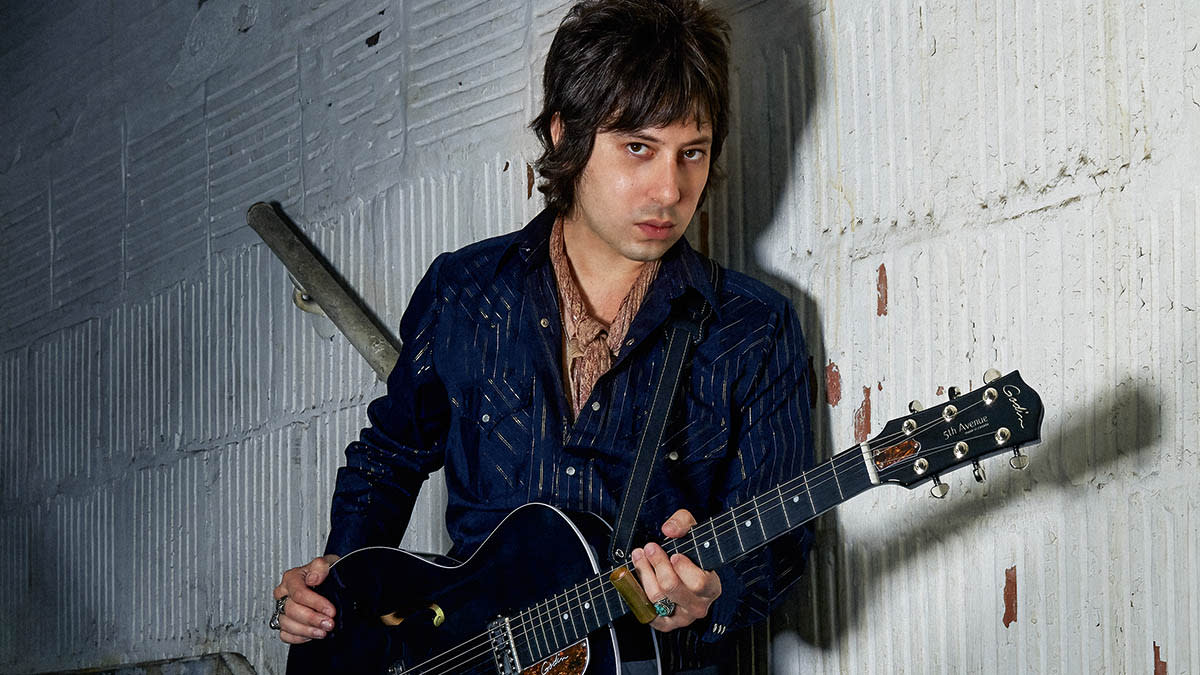Daddy Long Legs' Murat Aktürk on his open G anarchy: “I keep all six strings on there, unlike Keith Richards who takes off the low E – I have to work harder”

Described as ‘New York City’s most diabolical rhythm and blues street gang’, Daddy Long Legs look and sound every bit the city that spawned them. The trio’s new album takes its title Street Sermons title from time spent disturbing the peace on New York street corners with busked sets of their raucous blues-abilly rock ’n’ roll tunes.
“We worked backwards from The New York Dolls covering Bo Diddley,” explains guitarist Murat Aktürk, who first became enchanted by NYC’s legendary punk scene, before finding a love and talent for blues music.
Delivered at full throttle and full volume, Aktürk’s primal chops salute blues originators like Lightnin’ Hopkins and Elmore James, or – as he puts it – “a range of guys with different levels of proficiency.”
A four-piece, also with vocals, harmonicas, “tribal beats” and piano, the band has been a bass-free zone since day one, leaving Aktürk to “pick up the slack” in a role that traverses rhythm, slide, lead and nifty low-end lines played in open G – aka the Keith Richards tuning. “I keep all six strings on there, unlike Keith who takes off the low E,” he explains. “I have to work harder and I use that to do little bass runs.”
Guitar-wise, Aktürk’s favourites include a Mexican Shell Pink ’72 Reissue Thinline Telecaster with Wide Range humbuckers, and a black Zemaitis acoustic guitar complete with heart-shaped soundhole. A fan of resonant hollowbodies, he also uses Godin 5th Avenue Kingpin and Nightclub models to bring classic tones howling into a much rowdier context.
Pointing to his number one – the single P-90 equipped Kingpin – he laughs: “It’s supposed to be a jazz guitar but it’s a loud, screaming feedback guitar! I was looking for something like a Gibson ES-125 but, besides being expensive, I feel bad beating up vintage guitars.”
He runs his “naturally relic-ed” modern collection through a Fender Blues Deluxe, utilising the amp’s own drive channel for grit. An MXR Carbon Copy provides “a little slapback delay at all times,” while other pedals that get used for “maybe a fraction of a song” include a fuzz, tremolo and an octave to compensate for that lack of bass.
In the studio, another low-end revelation hit when Aktürk unlocked the potential of baritone guitars, pairing a Fender Bass VI with a Fuzz Face for some truly gnarly tones. A Danelectro Baritone also lent its trademark throatiness and extended scale to the stand-out slide solo on Been A Fool Once. “There’s so much neck to work with, so there’s some really long slides,” enthuses Aktürk. “It kind of blew my own mind!”
Street Sermons is out now via Yep Roc Records.

